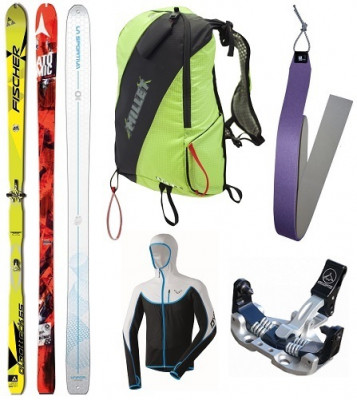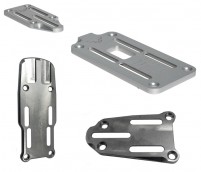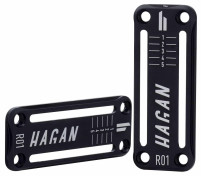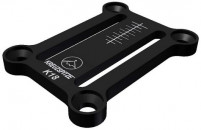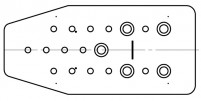5/2/2015 Tech Binding Adjustment Plates
Shedding weight often means shedding features. The ability to adjust your ski bindings to various boot lengths is one such feature that is commonly jettisoned on race bindings. If you know you’re going to be using a particular boot for a season or two, why carry an extra ounce or two?
But weight isn’t the only reason to go fixed. There is beauty and reliability in simplicity; one less thing to jam, strip, or break. Removing adjustment mechanisms also tends to lower pin heights, which is helpful if you’re targeting a neutral stance. For all the above reasons, we tend to recommend fixed mounts if you have reasonable confidence you’ll be in the same boots for at least a season.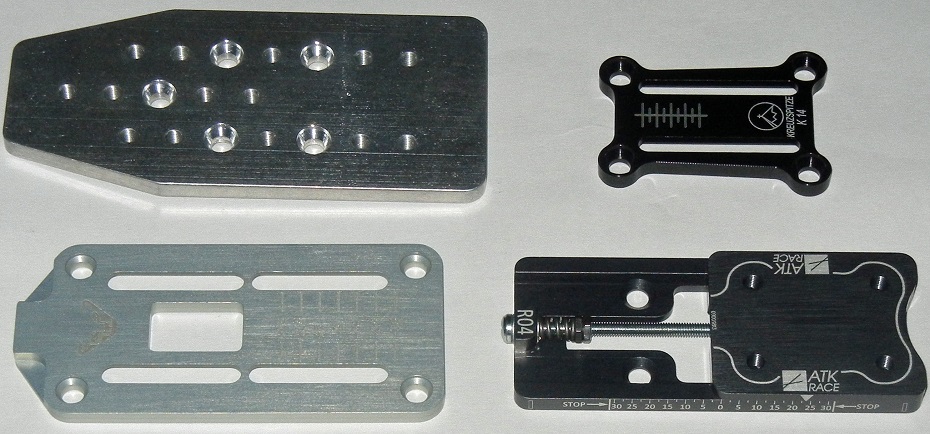
We make that recommendation knowing there is a fallback plan. If you do end up changing boots or selling your skis, you can add adjustment plates at that time. Almost every tech binding can be mounted onto some combination of toe and/or heel plates using special hardware. The plates are then mounted onto your skis, usually with the screws that came with the binding.
There are three main types of binding adjustment plates: bolt-tension, bolt-positioning, and threaded-hole. Each is detailed in its own section below.
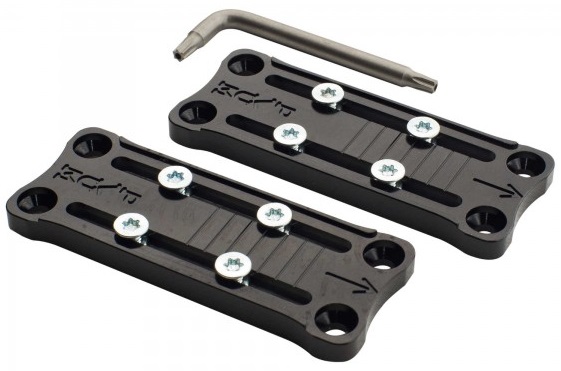
Tension Plates
Bolt-tension plates are the most common and consist of simple tracks along which adjustment screws can be slid. Resistance to fore/aft movement is proportional to how tightly the bolts are fastened into nuts mounted underneath the plate. Because of this fact, it’s a natural instinct to want to overtighten the bolts. It’s also tempting to add Loctite or similar thread-locker to prevent the bolts from loosening. However this can lead to stripped screws, for which finding replacements can be difficult. We tend to take the opposite approach and add grease to the threads, making sure to check their tightness on a regular basis. Be careful not to grease the actual plates or nuts underneath, as these surfaces provide the friction that prevents the heels from sliding.
| Tension Plate | Rail Dimensions (WxL) | Mounting Pattern (WxL) |
| ATK R01 | 25 x 71 | 25 x 86 |
| Black Diamond Helio | 25 x 71 | 25 x 86 |
| Dynafit Toe | 30 x 37 | 40 x 91 |
| Dynafit 1.0 Heel | 23 x 38/50 | 26 x 54 |
| Dynafit LTR 2.0 | 28 x 31 | 40/22 x 62 |
| Dynafit Superlite 2.0 | 28/34 x 26 | 35.5 x 88 |
| Hagan | 25 x 71 | 25 x 86 |
| Kreuzspitze 14mm | 20.5 x 45 | 32/36 x 52.5 |
| Kreuzspitze 18mm | 20.5 x 49 | 36 x 52.5 |
| Kreuzspitze 40mm | 20.5 x 70 | 36 x 75 |
| Kreuz. Universal | 25 x 62 | 36 x 75 |
| Kreuz. Old LTR | 32 x 60 | 36 x 75 |
| Plum | 20.5 x 70 | 25 x 86 |
| Ski Trab Race | 25 x 61 | 36 x 75 |
The table above details the dimensions of the adjustment tracks and mounting patterns for various adjustment plates. Combined with binding dimensions, you can determine what plates might work with your binding as well as calculate the approximate amount of fore/aft adjustability. Let’s consider an example.
The Kreuzspitze adjustment plates feature a 20.5mm wide track, which happens to be the mounting width of the Plum race 135/145 heels. Sure enough, that heel/plate combo works great. This means that you can easily swap a Dynafit touring heel with a Plum race heel without re-drilling. That’s because the 14mm “Special K” adjustment plates are drill hole compatible with Dynafit Speed, Radical, Vertical & Comfort heels.
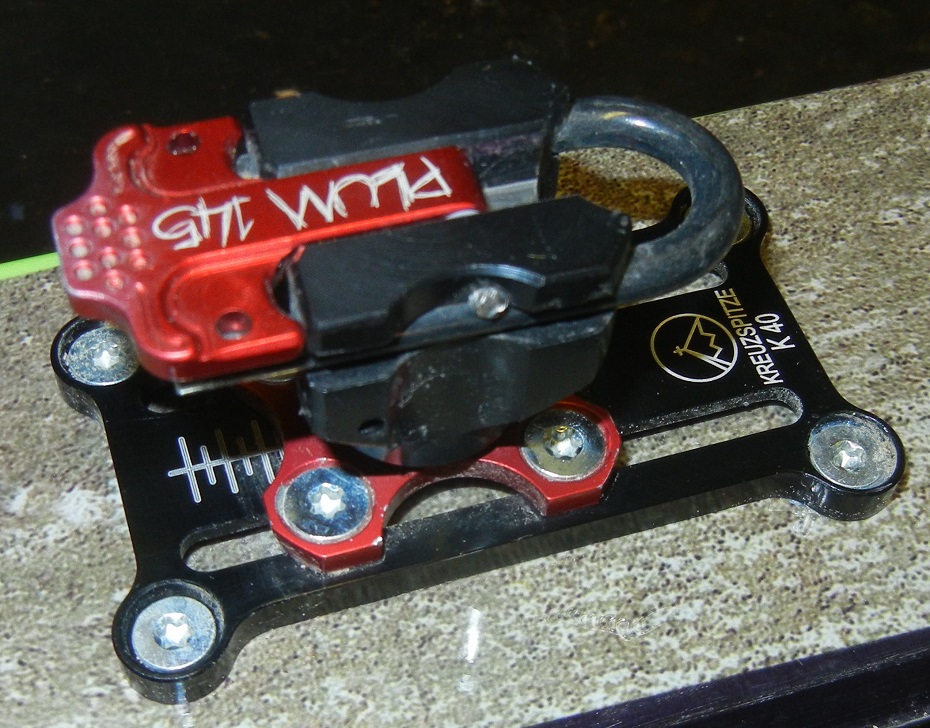
To approximate the adjustment range of that combo, start by subtracting the rail length dimension by the mounting length of the heel piece. From this result, subtract another 5-6mm to account for the screw width (or more precisely, two half-widths). The adjustment bolts need to fit in the tracks, after all.
Checking the data tables, the 14mm adjustment plates have a 45mm track and the Plum heel holes are 26mm apart lengthwise. They come with M5 (5mm) bolts. Plugging the numbers into the formula, 45mm – 26mm – 5mm = 14mm. Thus Plum heels have a ~14mm adjustment range when mounted on a Kreuzspitze 14mm plate. We recommend subtracting a couple more millimeters to account for variances in nut shape, hole chamfering, mount location, and discrepancies between stated and measured sole lengths. 12-13mm should be all the adjustment you can expect from this combo.
Now let’s try a more advanced example. The Hagan binding plates feature a 25mm wide track, which happens to be the same length as the Kreuzspitze SCTT heel pieces. Knowing the internal binding mechanics are symmetrical, it’s possible to mount the heels sideways on a Hagan plate. While not necessarily a recommended configuration, we were able to use this combo successfully in a pinch.
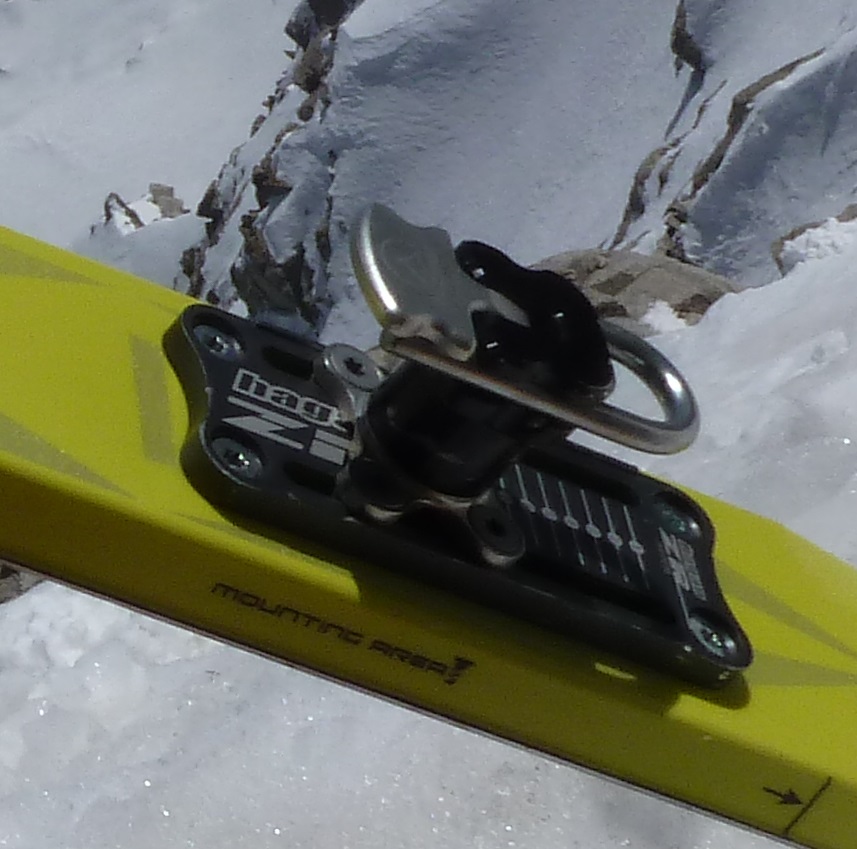
One warning when mixing and matching plates and heels across brands. The mounting screws for one brand may not seat properly in the plate holes of another, reducing the amount of threads engaged in the ski. To be safe, we recommend using the binding mounting screws provided by the manufacturer of the plates, noting that these are not typically included.
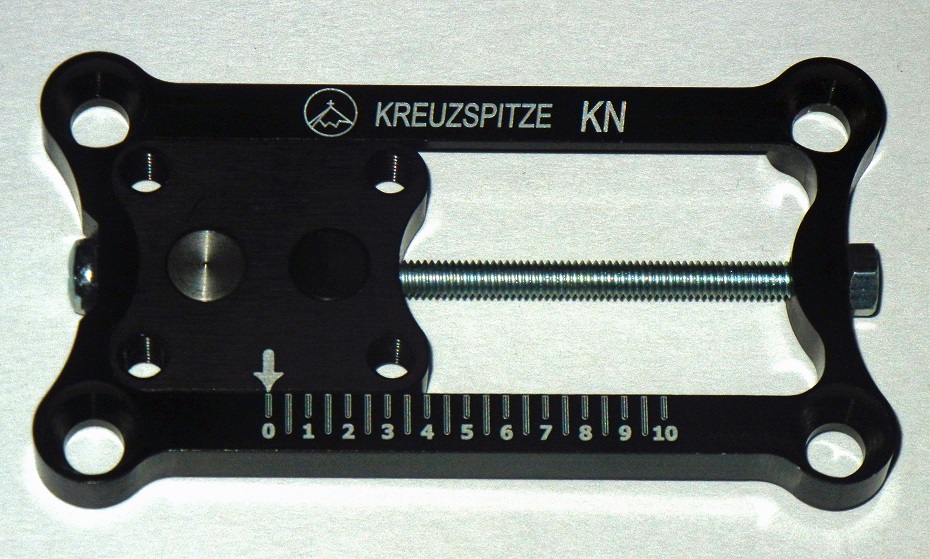
Positioning Plates
Bolt-positioning plates consist of a linear stage that slides along a leadscrew, actuated with a wrench or driver. Often called rental plates, these devices are faster to adjust and less likely to strip. They are also easier to fine tune for a precise heel gap (heels mounted on tension plates can subtly wander during tightening). The downside is they tend to be heavier and compatible with fewer heel pieces. This is because the stage is drilled and threaded to accept a specific heel pattern. Below are the nitty-gritty details of said patterns.
| Positioning Plate | Heel Pattern (WxL) | Mounting Pattern (WxL) |
| Hagan Rental | 25 x 34 | 25 x 59 |
| Kreuzspitze Rental | 20.5 x 25 | 36 x 75 |
| Ski Trab Flex 30 | 25 x 31 | 45 x 37 |
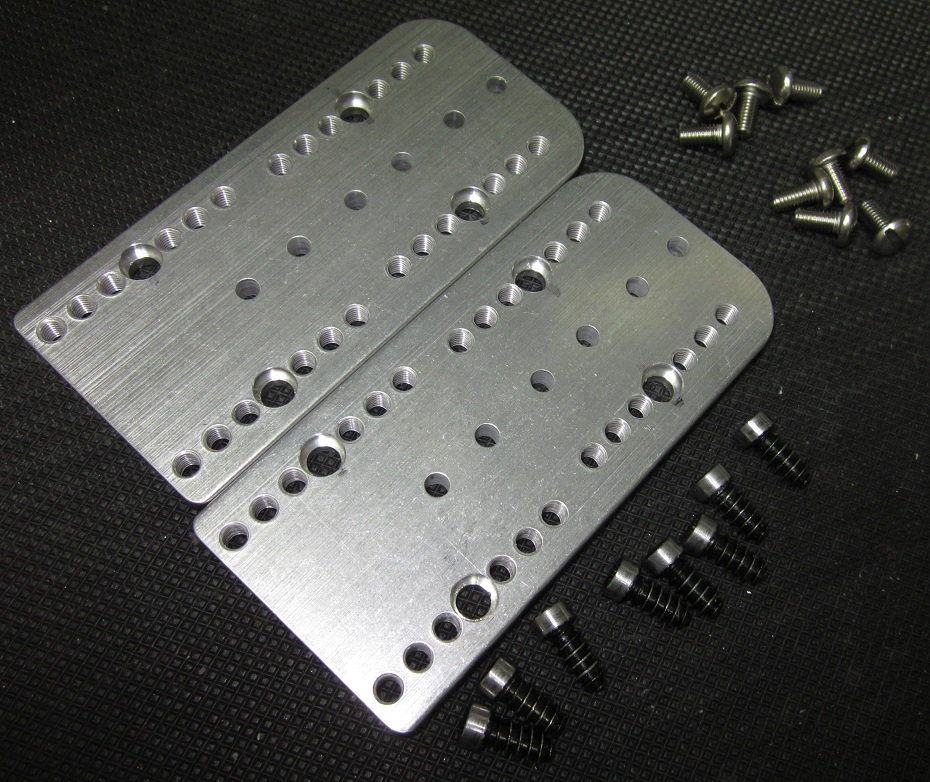
Threaded-hole Plates
Also known as shift plates, threaded-hole plates consist of multiple sets of holes that exactly match the mounting pattern of the bindings they support. Screw the binding toe or heel into the hole-set that makes the most sense given your boot sole length and desired mounting position. These types of plates are very robust, yet lack the ability to fine tune the binding position since they can only be moved in pre-defined distance increments. Fine-tuning is accomplished with another plate or a binding with a built-in adjustment mechanism. The pre-defined increments are listed below.
Threaded-hole plates are often used in situations where drilling additional holes is suboptimal, usually because the new set would be too close to existing holes or otherwise compromise the integrity of the ski. In this case, you can use the existing holes to mount the plates, and then select another hole-set into which you can screw the binding. Thus you’ve effectively shifted the location of the existing mount.
| Shift Plate | Hole Sets | Increment | Mounting Pattern (WxL) |
| B&D Toe - Classic | 4 | 13mm | 30 x 26.5 (+19) |
| B&D Toe - Radical | 3 | 13mm | 30 x 39 |
| B&D Toe - Outside | 4-5 | 13mm | 47.5 x 79.5 |
| B&D Heel - Inline | 6 | 6mm | 32/36 x 52.5 |
| B&D Heel - Centered | 7 | 6mm | 0 x 27 (+27) |
| Kreuzspitze Toe Shift | 3 | 13.5mm | 36 x 75 |
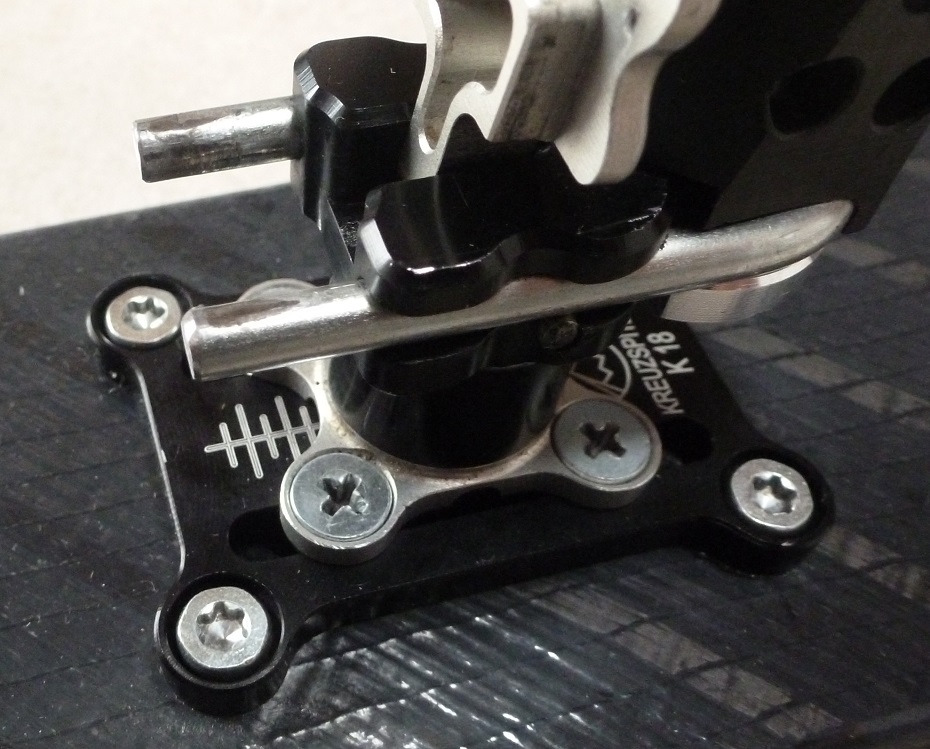
All of the above plate types can be useful when maintaining a boot quiver as they can help you maintain a centered position on the ski. They are also handy if you aren’t quite sure where you want to be mounted on the ski. One use-case is to mount a ski with some adjustment plates and test skiing it at various fore/aft positions. Once the sweet spot is found, you can then remove the plates and do a fixed mount at the perfect location for your style and boot sole length.
That’s all for now. We hope you’ve found this information helpful. Head on over to our binding section to acquire these tools of the trade.
Comments
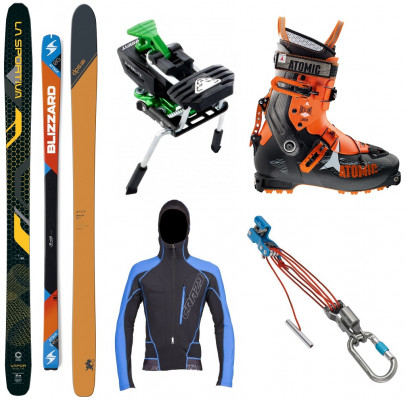
10/1/2015
2015/16 Season Preview
